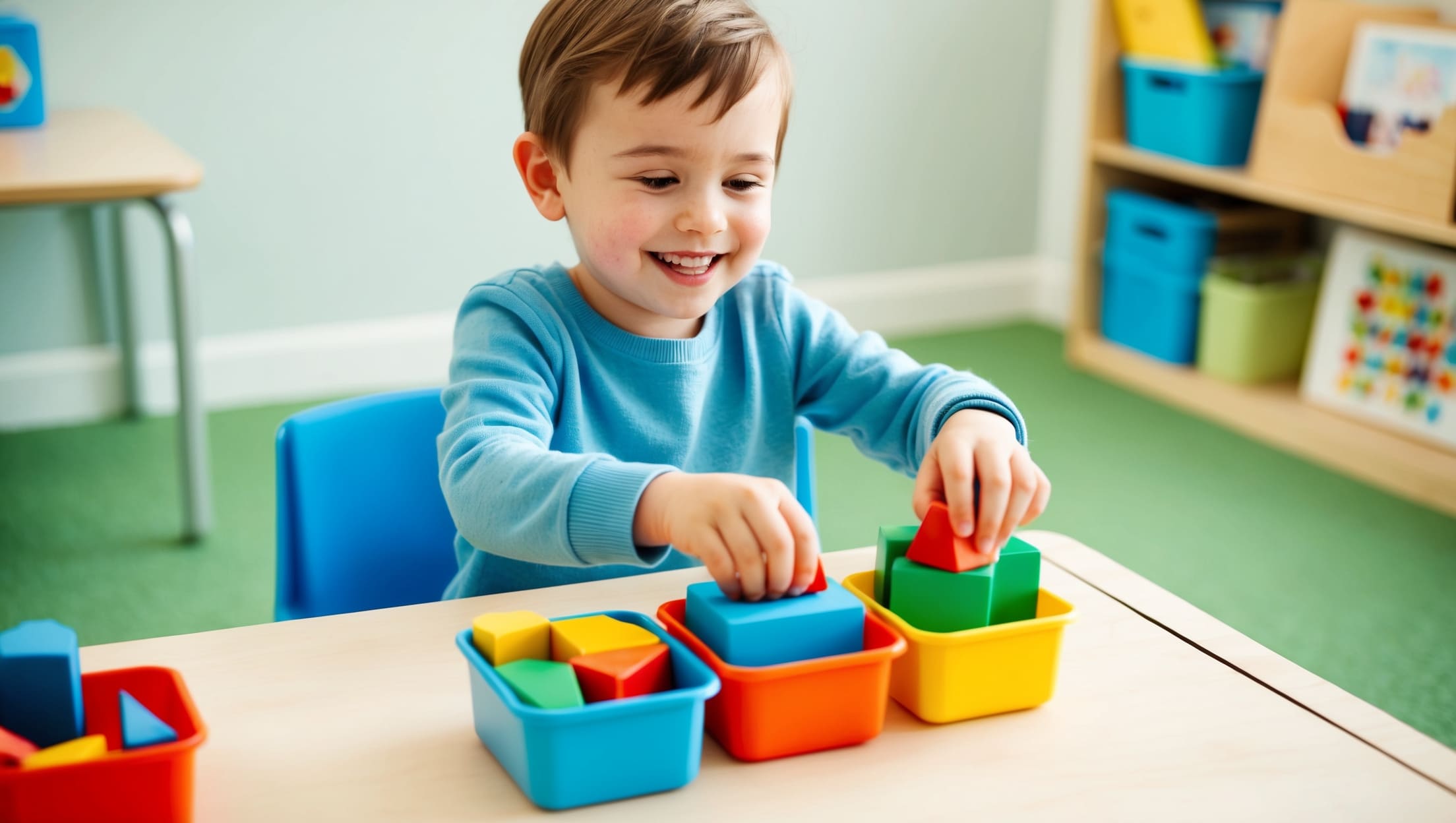المدونة
How to Teach Your Child to Sort Shapes and Colors

Is your child ready to learn how to sort shapes and colors? Sorting is one of the most important cognitive skills that children begin to develop in early childhood. It forms the foundation for more advanced thinking skills, including categorization, comparison, and problem-solving. When children learn to sort by color and shape, they begin to understand how to observe, differentiate, and classify the world around them.
Learning how to sort shapes and colors also supports the development of early math and science skills. Children learn to recognize similarities and differences, organize objects based on specific features, and build the mental flexibility needed for future academic success.
In this article, we’ll explore fun, simple, and effective ways to teach your child to sort shapes and colors at home. From games and toys to daily routines and songs, you’ll discover creative strategies to help your child grow these essential skills in a joyful, interactive way.
Tip 1: Start with Color Sorting Games
When introducing sorting, it’s helpful to begin with color sorting because colors are usually easier for toddlers and preschoolers to recognize than shapes. Bright, distinct colors attract their attention and make learning more accessible and exciting.
- Use Colored Toys or Blocks: Offer your child a mix of red, blue, yellow, and green blocks or small toys. Ask them to place similar-colored objects into piles or containers. This encourages visual discrimination and reinforces color recognition.
- Color Matching Cards: Make simple cards using construction paper, each in a different color. Your child can then place matching items—such as pom-poms, buttons, or beads—on each card. This simple exercise strengthens fine motor skills and categorization.
- Sort Everyday Objects: You don’t need special toys to teach colors. Have your child sort-colored socks while doing laundry, arrange colored cups at mealtime, or group fruits by color. Using everyday items shows that learning can happen anytime.
Color sorting is the perfect first step toward teaching children to observe, compare, and organize items visually—a key part of early learning.
Tip 2: Introduce Shape Sorting with Toys and Puzzles
Once your child is comfortable with colors, it’s time to introduce shape sorting. Shapes help children begin to understand geometry, spatial awareness, and early logic.
- Use Shape Sorter Toys: Classic shape sorters come with various shaped holes—circles, squares, triangles—and matching pieces. These toys require kids to analyze each shape and find the correct fit, improving both recognition and motor coordination.
- Shape Matching Puzzles: Wooden or foam puzzles with cutouts for each shape encourage hands-on learning. As your child learns to match a square to its outline or a star to its slot, they also practice visual memory and problem-solving.
- Create DIY Shape Games: Use colored paper to cut out large shapes like circles, triangles, rectangles, and stars. Then, ask your child to match each shape to a similar one or to group them by shape. You can even make a fun “shape scavenger hunt” at home.
Sorting by shape teaches children to notice the differences in lines, edges, and forms—critical concepts in early math and science.
Tip 3: Use Sorting Bins and Labels
Providing structure and clear visual organization helps children learn more effectively. When they understand the sorting task visually, they are more likely to succeed and feel confident in their efforts.
- Create Sorting Stations: Use small bins, bowls, or baskets to sort different shapes or colors. Label each container with the shape or color it represents. This gives your child a clear and structured way to group items.
- Add Visual Cues: For children who are not yet reading, include symbols, icons, or color swatches on labels. For example, a red square or a blue circle on the bin helps them associate the visual with the category.
- Turn It Into a Game: Make sorting time exciting. Use a timer and challenge your child to sort objects within a time limit. Or play their favorite song and ask them to finish sorting before the song ends. Gamifying the process encourages engagement and repetition.
Using labeled bins not only helps with sorting but also teaches organization, responsibility, and independent learning.
Tip 4: Practice Sorting During Daily Routines
You don’t need to set aside special lessons to teach sorting. Children learn best through repetition and real-life activities. Including sorting in daily tasks reinforces the skill naturally and consistently.
- Laundry Sorting: When doing laundry, let your child help separate clothes by color or by type (e.g., shirts, pants, socks). This turns a routine task into an educational opportunity and teaches responsibility at the same time.
- Snack Time Sorting: Offer your child a snack like colored cereal or sliced fruit and ask them to group the pieces by color or shape. They can sort red apple slices, orange carrots, and green grapes before eating them.
- Toy Clean-Up: Use sorting as part of clean-up time. Encourage your child to sort toys by type (cars, dolls, blocks), size, or color. This reinforces classification and builds helpful habits.
Making sorting a part of your everyday routine gives children repeated exposure to these concepts in a meaningful context.
Tip 5: Reinforce Concepts with Songs and Stories
Children love music and storytelling. These tools can help reinforce sorting skills in a playful, engaging, and memorable way.
- Sing Shape and Color Songs: Songs like “I’m a Little Circle” or “Red, Yellow, Green, and Blue” help children remember shapes and colors. Add hand motions or visual props to make the songs interactive.
- Read Themed Books: Choose storybooks that explore colors and shapes. As you read, pause to point out shapes and colors, and ask your child to name or find them. This builds vocabulary and comprehension.
- Make Storytime Interactive: Ask questions like “Can you find something round on this page?” or “What color is the bear’s hat?” Involving your child keeps them engaged and helps them practice identifying and categorizing.
Songs and stories combine visual, auditory, and kinesthetic learning—an ideal mix for young children.
Teaching your child to sort shapes and colors is more than just a preschool skill—it’s a vital part of cognitive development that lays the groundwork for future academic success. By integrating sorting into playtime, daily routines, and creative activities, you can help your child strengthen their observation, organization, and problem-solving abilities in a way that feels natural and enjoyable.
The key is consistency, patience, and making learning fun. Use these strategies often, and celebrate your child’s achievements along the way. With your support and a playful approach, your child will gain confidence and curiosity that will benefit them in every area of life.










